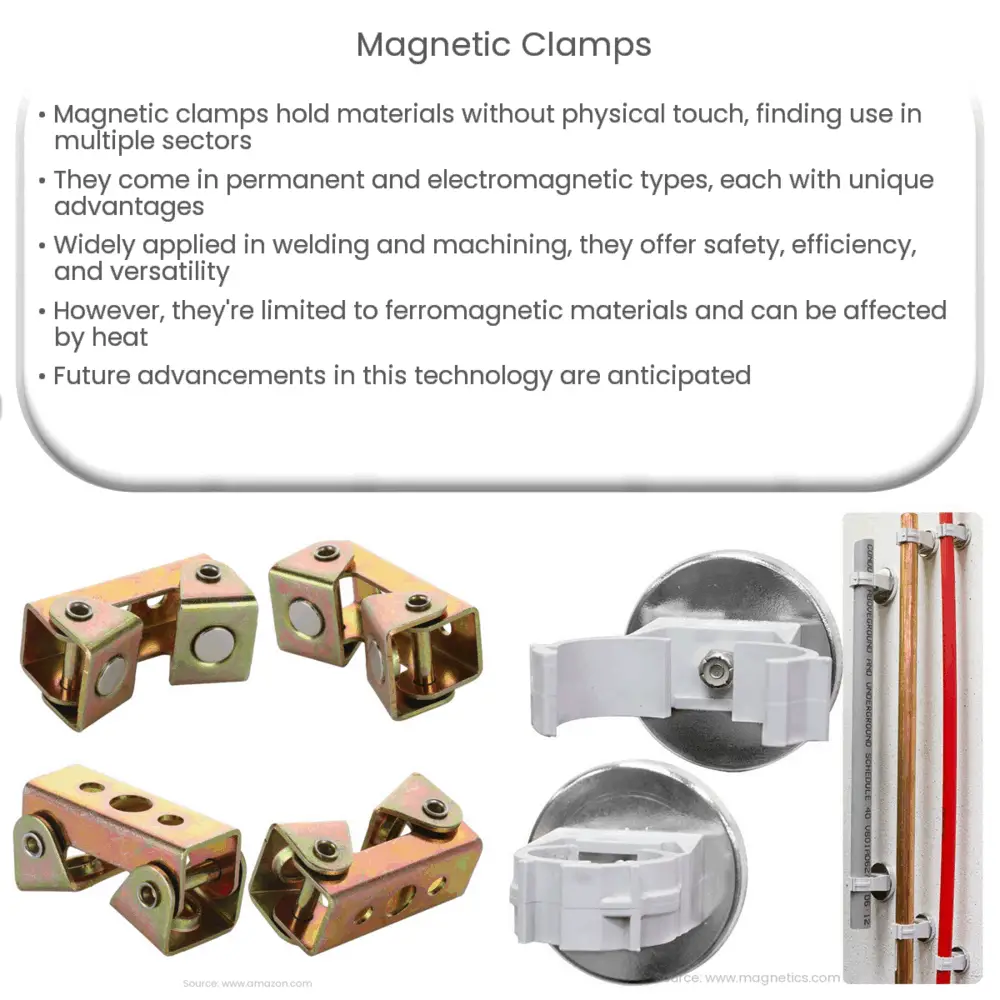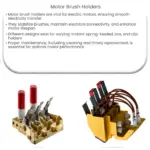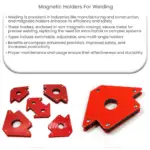Explore the world of magnetic clamps, their types, uses, benefits, and future prospects in this comprehensive overview.

Magnetic Clamps: A Comprehensive Overview
The ability to hold or manipulate materials without physically touching them might seem like something from a science fiction story. However, thanks to the wonders of magnetic clamps, this is a possibility in reality. These devices are increasingly utilized in a variety of sectors due to their unique attributes and exceptional flexibility.
Understanding Magnetic Clamps
Magnetic clamps, sometimes referred to as magnetic fixtures or magnetic holders, utilize the power of magnetic fields to exert a clamping force. These are fundamentally designed to secure or hold workpieces during machining, welding, and other industrial applications. This function stems from the inherent nature of magnets, which attract ferromagnetic materials such as iron, nickel, and cobalt.
Types of Magnetic Clamps
It’s important to note that both types of clamps have their own sets of pros and cons and are used based on the specific requirements of the tasks.
Application of Magnetic Clamps
Magnetic clamps, with their unparalleled adaptability and efficacy, have revolutionized various industries. Their ability to provide a strong and steady hold while also being flexible for adjustments makes them an indispensable tool in many operations.
The Science Behind Magnetic Clamps
So how do these clamps manage to hold heavy pieces of metal securely without any physical clamp? The answer lies in the principles of electromagnetism, where an electric current is used to generate a magnetic field. When an electric current is passed through a coil wrapped around a magnetic core (usually iron), it creates a strong magnetic field. This field can be turned on and off by controlling the electric current, providing the unique ability to hold and release objects at will.
When this principle is applied to clamps, it enables an immense degree of control and versatility in material handling and manipulation.
Advantages of Magnetic Clamps
Magnetic clamps come with a host of benefits that make them a preferred choice in many industrial applications. Some of these advantages include:
Considerations When Using Magnetic Clamps
While magnetic clamps are incredibly useful, certain precautions must be taken to ensure they are used safely and effectively.
Future of Magnetic Clamps
Given their wide range of applications and advantages, the future of magnetic clamps looks promising. Advancements in materials science and electromagnetism will likely lead to the development of even more efficient and versatile clamps. In addition, we can anticipate innovative applications in new industries as the technology progresses.
Conclusion
In conclusion, magnetic clamps serve as a testament to how scientific principles can be harnessed to simplify complex industrial processes. With their unique capabilities and potential for future advancements, these clamps have a significant role to play in diverse sectors. While they might not be suitable for every situation, understanding their operation, benefits, and limitations can help industries make an informed choice about their application.
The power of magnetism, when leveraged effectively, can offer substantial improvements in safety, efficiency, and versatility. Hence, magnetic clamps stand as powerful tools in the toolbox of modern industry, further pushing the boundaries of what is achievable in various fields.




